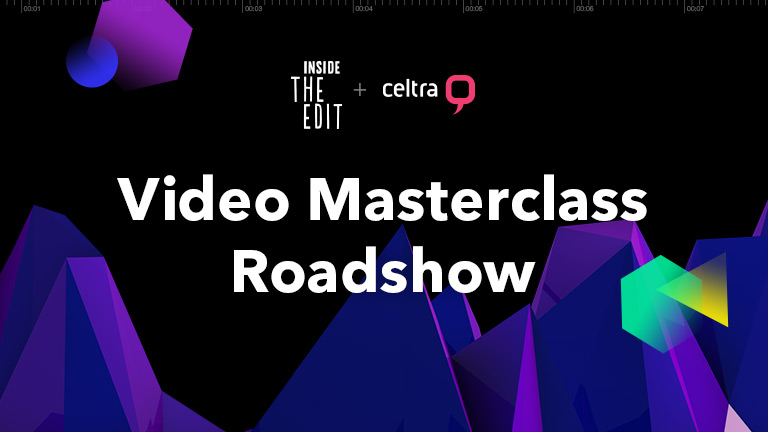Celtra, recently hosted a multi-city masterclass on “The art of short form video” as part of the company’s crusade to educate the industry on more effective ways to leverage video for storytelling in a mobile environment. The video roadshow explained the beauty and craftsmanship involved in video editing, and how to manage some of the challenges affecting traditional brand storytelling, from the absence of sound, the potentially vertical frame, the struggle to retain the viewer's increasingly short attention span.
Collectively, 700 media professionals gathered in NY, LA, San Francisco and London, to listen and participate in pioneering a new video language for brand storytelling on mobile.
See the photos here on our Facebook page
Read the summary piece written by the Editor of Mobile Marketing Magazine, David Murphy
The Future of Ad Tech: Terminator or Replicant?
I spent yesterday afternoon at a fairly hardcore (as in, in-depth) video editing event organised by ad tech firm Celtra.To celebrate the launch of its Ad Creator Video Editor tool for creating and repurposing outstream video content (i.e. video that appears within an editorial newsfeed), the company has organised a series of Outstream Video Masterclasses in cities around the world. Yesterday, it came to London.
The star turn was video editor Paddy Bird who took the assembled audience – a crowd of around 100 ad tech and agency execs – through some of the basics of the art of video editing, explaining as he did so that it’s a craft that is usually done behind closed doors and which, as a result, is one that few people outside of the industry know anything about. He also covered some of the peculiarities of mobile which, given Celtra’s patronage of the event, made a lot of sense.
Out of all the people in the room, I suspect I was the one with the least need to know about the intricacies of video editing, but it was an interesting session, and in fact, I got enough value from the preamble, a 30-minute presentation delivered by Celtra co-founder, Matevz (pronounced Mateus) Klanjsek.
Deep thinker
Klanjsek bears an uncanny resemblance to Cure front man Robert Smith, a tad less goth perhaps, but in spite – or maybe because – of this, is something of a deep thinker. I interviewed him some weeks ago for a piece for our print magazine on creativity in mobile advertising, and was struck by the way he constructed his argument slowly but surely to make his point.Perhaps part of the reason was that he was preparing his presentation for yesterday’s event at the time, because some of the themes he touched on did seem familiar to me from the call. The basic premise of his argument was that new media tend to imitate what came before them. Then people get bored with it, so it has to reinvent itself. So the first TV ads were like radio ads, just a talking head delivering a hard sales message.
Then when those ads started becoming less effective, TV advertising had to reinvent itself, as it did in the ‘80s when you could choose from dozens of great campaigns – Guinness, Hamlet, Cinzano, Milk Tray to name but a few. The one Klanjsek settled on was Apple’s iconic ‘1984’ ad.
His point was that when digital came along, digital banner ads imitated what had gone before (print) as did digital video (TV). Not surprisingly then, digital advertising has fallen out of favour. As Klanjsek describes it, it’s in the ‘Crisis’ mode that comes before reinvention.
To make his point he noted that the clickthrough rate on digital ads is currently languishing at around 0.06 per cent, compared to 3 per cent a few years ago, or 44 per cent when digital ads first appeared on websites.
Stagnating prices
“This stuff is not working,” he said. “Nobody’s clicking on those ads any more; people hate those ads, and because of this we have stagnating prices. Pricing has been flat for five years while TV has grown 50 per cent. We cannot raise prices because the performance is so poor. But because the industry needs to grow, we are trying to scale, which leads to bad inventory, fraud, and non-viewable ads, and because of all this, users hate advertising even more, and they start blocking the ads.”As on the phone call a few weeks ago, the logic of Klanjsek’s argument struck me as impeccable. I’ve heard the notion advanced before that digital publishers have created the ad blocking problem they now face by overloading their sites with too many ads, but no one else I have heard talking about it has brought in this element of poor performance leading to stagnating prices as the cause of the over-supply of inventory.
Summing up, Klanjsek said the future of ad tech was about more tech, but said the industry faced a choice between the type of ruthless machine seen in The Terminator or the machine (Replicant) that’s more human than a human, seen in Blade Runner.
“We can keep force feeding consumers with ads they hate, or we can create ads that users will love and want to engage with and then we create desire and we create love,” he said.
At this point in time, some might argue that the idea of people going so far as to say they love advertising is taking it a bit far. But those old enough to think back to the 1980s and those wonderful ads for Hamlet or for Cinzano, with Leonard Rossiter throwing his drink all over Joan Collins may well argue otherwise.
In any event, credit to Klanjsek for pulling no punches and telling it how it is. The sooner the rest of the digital ad industry loses the obsession with the race to the bottom and starts focusing on quality and premium, the better the industry will be for it.
The article sourced here

